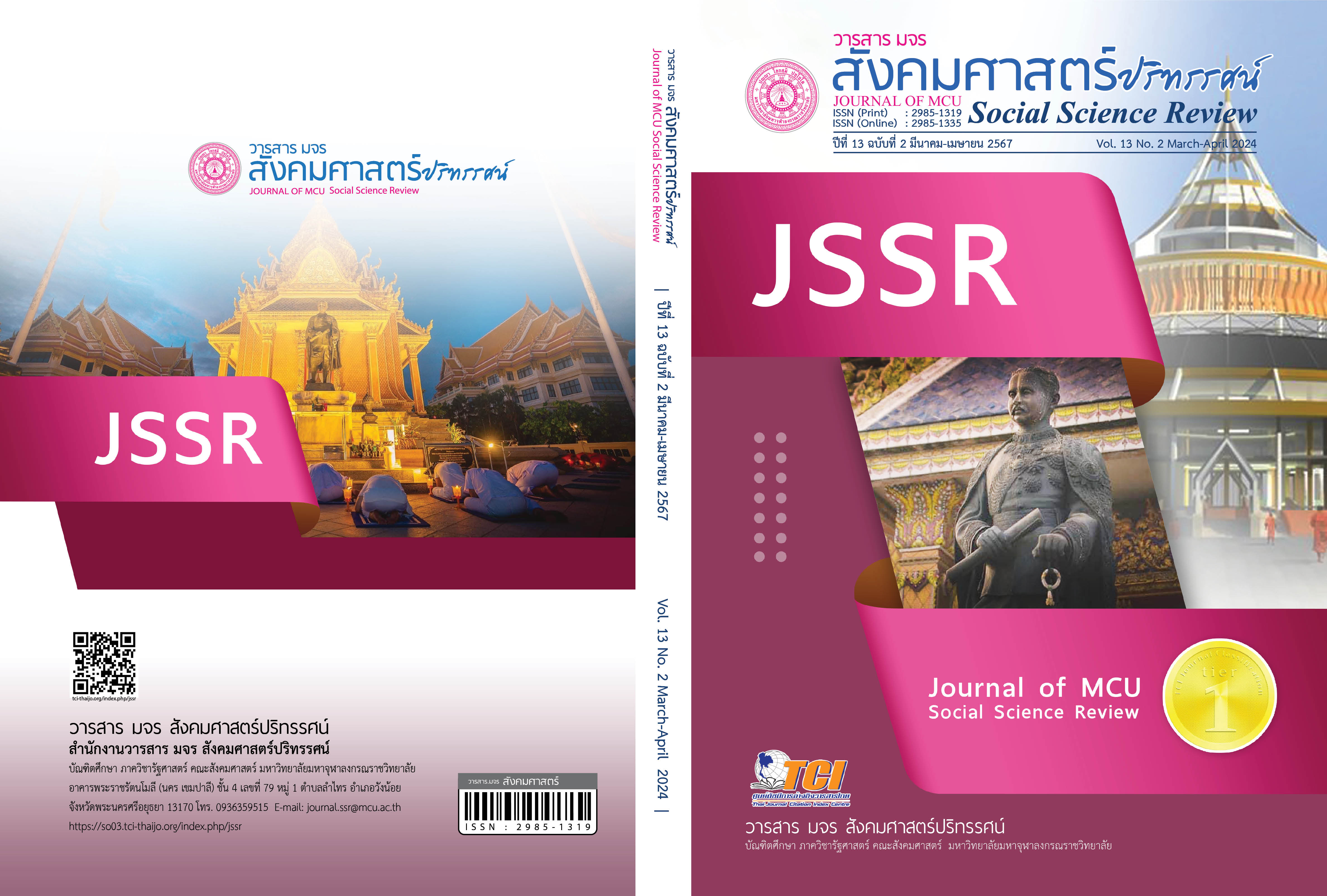การจัดการเรียนรู้แบบมีส่วนร่วมผ่านการจัดการการผลิตเมล็ดพันธุ์ข้าว เพื่อการพึ่งพาตนเองของกลุ่มนาแปลงใหญ่ในพื้นที่จังหวัดนครราชสีมา
คำสำคัญ:
เมล็ดพันธุ์ข้าว, ห่วงโซ่อุปทาน, นาแปลงใหญ่บทคัดย่อ
บทความวิจัยนี้มีวัตถุประสงค์ 1. ศึกษาห่วงโซ่อุปทานเมล็ดพันธุ์ข้าว 2. สร้างองค์ความรู้ด้านการจัดการการผลิตเมล็ดพันธุ์ข้าว 3. สร้างกลยุทธ์การบริหารกระบวนการผลิตเมล็ดพันธุ์ข้าว และ 4. สร้างเครือข่ายการกระจายเมล็ดพันธุ์ข้าวคุณภาพดี เป็นการวิจัยเชิงปฏิบัติการ
แบบมีส่วนร่วมครั้งนี้ กลุ่มเป้าหมาย คือ เกษตรกรที่เป็นสมาชิกนาแปลงใหญ่ในพื้นที่อำเภอสูงเนิน เฉลิมพระเกียรติ และพิมาย จังหวัดนครราชสีมา การเก็บรวบรวมข้อมูลได้จำแนกตามวัตถุประสงค์ของการวิจัย 1) แบบสอบถาม 2) แบบสัมภาษณ์ แบบประเมินผล และแบบทดสอบ 3) แบบสัมภาษณ์ 4) แบบบันทึก ด้านการวิเคราะห์ข้อมูลใช้การวิเคราะห์ทางสถิติและเนื้อหา
ผลการวิจัยพบว่า ห่วงโซ่อุปทานเมล็ดพันธุ์ข้าว แบ่งได้ 3 ระดับ โดยต้นน้ำคือเกษตรกร ผู้ปลูกเมล็ดพันธุ์ข้าว กลางน้ำ คือผู้จัดหาเมล็ดพันธุ์ข้าว และปลายน้ำ คือผู้ที่รับซื้อเมล็ดพันธุ์ข้าว ด้านการสร้างองค์ความรู้ ทำได้โดยใช้คู่มือวิธีการผลิตเมล็ดพันธุ์ข้าวคุณภาพดีและกรณีศึกษากลุ่มนาแปลงใหญ่ ในส่วนของกลยุทธ์ มีกลยุทธ์ที่ได้รับการพัฒนาจาก TOWS Matrix จำนวน 3 รูปแบบ คือกลยุทธ์จุดแข็ง-โอกาส จุดอ่อน-โอกาส และจุดแข็ง-อุปสรรค และการสร้างเครือข่าย พบว่าเกิดเครือข่ายเมล็ดพันธุ์ข้าวแบบไม่เป็นทางการของเกษตรกรกลุ่มนาแปลงใหญ่ในพื้นที่จังหวัดนครราชสีมา
เอกสารอ้างอิง
กระทรวงเกษตรและสหกรณ์. (2563). คู่มือโครงการยกระดับแปลงใหญ่ด้วนเกษตรสมัยใหม่และเชื่อมโยงตลาด. กรุงเทพฯ: กระทรวงเกษตรและสหกรณ์.
จิตติพัฒน์ จำเริญเจือ และวิภาวี กฤษณะภูติ. (2556). แนวทางการพัฒนาการจัดการศูนย์ส่งเสริมและผลิตเมล็ดพันธุ์ข้าวชุมชนในจังหวัดกาฬสินธุ์สู่ความยั่งยืน. วารสารบัณฑิตศึกษามนุษยศาสตร์สังคมศาสตร์ มหาวิทยาลัยขอนแก่น, 2(2), 129-150.
ณัฐพัชร์ ศรีทรัพย์. (2551). การดำเนินงานของศูนย์ส่งเสริมและผลิตพันธุ์ข้าวชุมชนในอำเภอคง จังหวัดนครราชสีมา. กรุงเทพฯ: กรมส่งเสริมการเกษตร.
ปิยะนันท์ ทรงสุนทรวัฒน์. (2564). รูปแบบการบริหารเครือข่ายเกษตรกรนาแปลงใหญ่ในการเพิ่มมูลค่าข้าวอย่างยั่งยืน. วารสารชุมชนวิจัย, 15(2), 94-103.
สำนักงานเศรษฐกิจการเกษตร. (2564). สถานการณ์สินค้าเกษตรที่สำคัญและแนวโน้มปี 2565. กรุงเทพฯ: กระทรวงเกษตรและสหกรณ์.
อารมณ์ แก้วศรีสุข และพีรสิทธิ์ คำนวณศิลป์. (2555). การจัดการความรู้เรื่องการผลิตเมล็ดพันธุ์ ข้าวของศูนย์ข้าวชุมชนตำบลดงใหญ่. วารสารการบริหารท้องถิ่น, 5(1), 13-24.
Robert, K. & David, N. (1996). The Balanced Scorecard: Measures that Drive Performance. Massachusetts: Harvard Business School Press.
Sweeney, E. (2011). Supply Chain Integration: Challenges and Solutions. Birmingham: IGI Global.
Verma, R. & Boyer, K. (2010). Operations and Supply Chain Management: World Class Theory and Practice. Ohio: Southwestern Cengage Learning.
Weihrich, H. (1982). The TOWS matrix—A tool for Situational Analysis. Long Range Planning, 15(2), 54-66.
ดาวน์โหลด
เผยแพร่แล้ว
รูปแบบการอ้างอิง
ฉบับ
ประเภทบทความ
สัญญาอนุญาต
ลิขสิทธิ์ (c) 2024 วารสาร มจร สังคมศาสตร์ปริทรรศน์

อนุญาตภายใต้เงื่อนไข Creative Commons Attribution-NonCommercial-NoDerivatives 4.0 International License.
เพื่อให้เป็นไปตามกฎหมายลิขสิทธิ์ ผู้นิพนธ์ทุกท่านต้องลงลายมือชื่อในแบบฟอร์มใบมอบลิขสิทธิ์บทความให้แก่วารสารฯ พร้อมกับบทความต้นฉบับที่ได้แก้ไขครั้งสุดท้าย นอกจากนี้ ผู้นิพนธ์ทุกท่านต้องยืนยันว่าบทความต้นฉบับที่ส่งมาตีพิมพ์นั้น ได้ส่งมาตีพิมพ์เฉพาะในวารสาร มจร สังคมศาสตร์ปริทรรศน์ เพียงแห่งเดียวเท่านั้น หากมีการใช้ภาพหรือตารางหรือเนื้อหาอื่นๆ ของผู้นิพนธ์อื่นที่ปรากฏในสิ่งตีพิมพ์อื่นมาแล้ว ผู้นิพนธ์ต้องขออนุญาตเจ้าของลิขสิทธิ์ก่อน พร้อมทั้งแสดงหนังสือที่ได้รับการยินยอมต่อบรรณาธิการ ก่อนที่บทความจะได้รับการตีพิมพ์ หากไม่เป็นไปตามข้อกำหนดเบื้องต้น ทางวารสารจะถอดบทความของท่านออกโดยไม่มีข้อยกเว้นใดๆ ทั้งสิ้น





